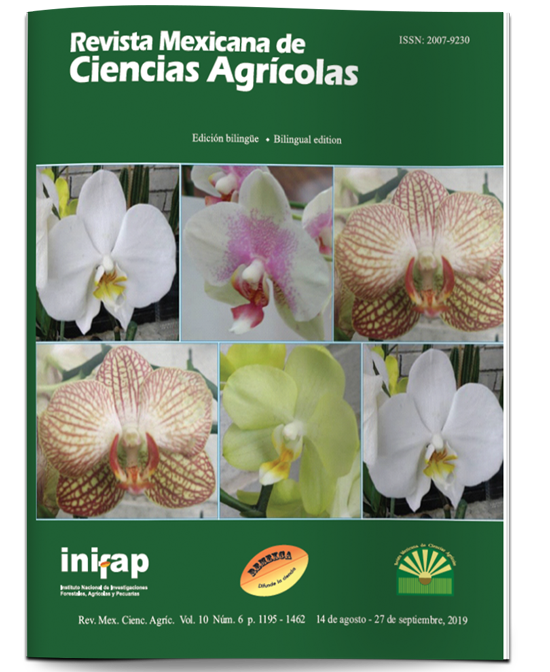Antagonism of Trichoderma spp. vs fungi associated with wilting of chilli
DOI:
https://doi.org/10.29312/remexca.v10i6.1326Keywords:
Capsicun annum, Phytophthora capsici, Trichoderma sppAbstract
In Mexico, more than 100 varieties of chili (Capsicum annuum L.) are planted, it is a highly profitable crop and represents an economic activity of national importance. Currently, it faces serious phytosanitary problems due to the presence of diseases such as the wilting of chili, caused by a complex of soil pathogens. To control these diseases, toxic and residual fungicides are used, which pollute the environment and induce genetic resistance in phytopathogens. Therefore, it is necessary to look for control alternatives to solve this problem, therefore, the objective of this work was to evaluate the antagonistic effect of Trichoderma spp., against the causal agents of wilting in in vitro confrontations by means of dual cultures. The study was carried out in 2016, at the Intercultural University of the State of Puebla, Huehuetla, Puebla, Mexico. Three Trichoderma isolates from avocado tree rhizospheres, T. viride, T. harzianum and T. asperellum and three isolates of the phytopathogens P. capsici, F. oxysporum and R. solani obtained from the roots of plant plants were evaluated chili with wilting symptoms. The isolates were morphologically characterized for identification. The three antagonistic fungi presented a high percentage of inhibition, T. asperellum showed 88.25%, T. viride 87.22% and T. harzianum with 87.8%. Under the conditions of the study, T. asperellum, T. viride and T. harzianum, were efficient antagonistic microorganisms against the studied phytopathogens. It is suggested to carry out biocontrol evaluations with these isolates in the greenhouse and in the open field.
Downloads
Downloads
Published
How to Cite
Issue
Section
License
The authors who publish in Revista Mexicana de Ciencias Agrícolas accept the following conditions:
In accordance with copyright laws, Revista Mexicana de Ciencias Agrícolas recognizes and respects the authors’ moral right and ownership of property rights which will be transferred to the journal for dissemination in open access. Invariably, all the authors have to sign a letter of transfer of property rights and of originality of the article to Instituto Nacional de Investigaciones Forestales, Agrícolas y Pecuarias (INIFAP) [National Institute of Forestry, Agricultural and Livestock Research]. The author(s) must pay a fee for the reception of articles before proceeding to editorial review.
All the texts published by Revista Mexicana de Ciencias Agrícolas —with no exception— are distributed under a Creative Commons License Attribution-NonCommercial 4.0 International (CC BY-NC 4.0), which allows third parties to use the publication as long as the work’s authorship and its first publication in this journal are mentioned.
The author(s) can enter into independent and additional contractual agreements for the nonexclusive distribution of the version of the article published in Revista Mexicana de Ciencias Agrícolas (for example include it into an institutional repository or publish it in a book) as long as it is clearly and explicitly indicated that the work was published for the first time in Revista Mexicana de Ciencias Agrícolas.
For all the above, the authors shall send the Letter-transfer of Property Rights for the first publication duly filled in and signed by the author(s). This form must be sent as a PDF file to: revista_atm@yahoo.com.mx; cienciasagricola@inifap.gob.mx; remexca2017@gmail.
This work is licensed under a Creative Commons Attribution-Noncommercial 4.0 International license.



